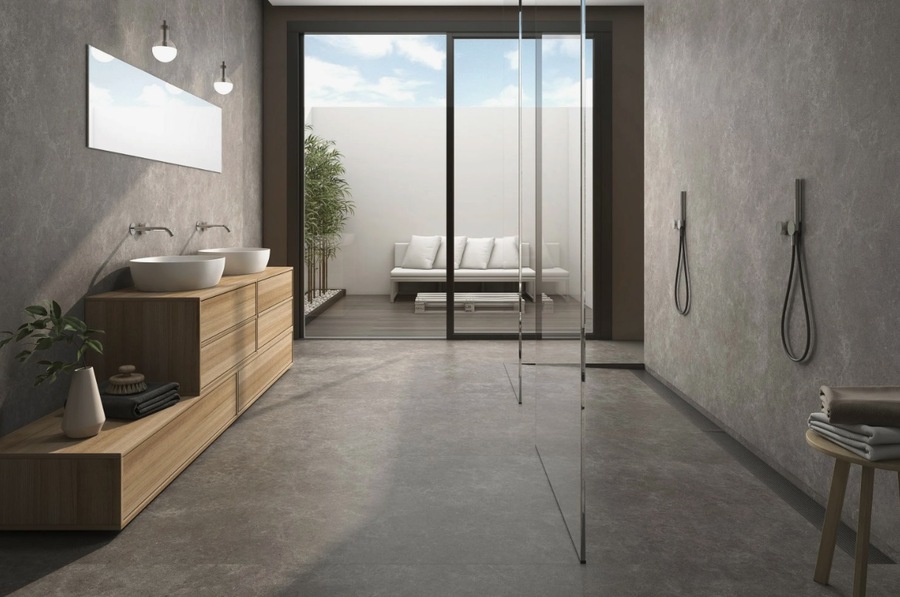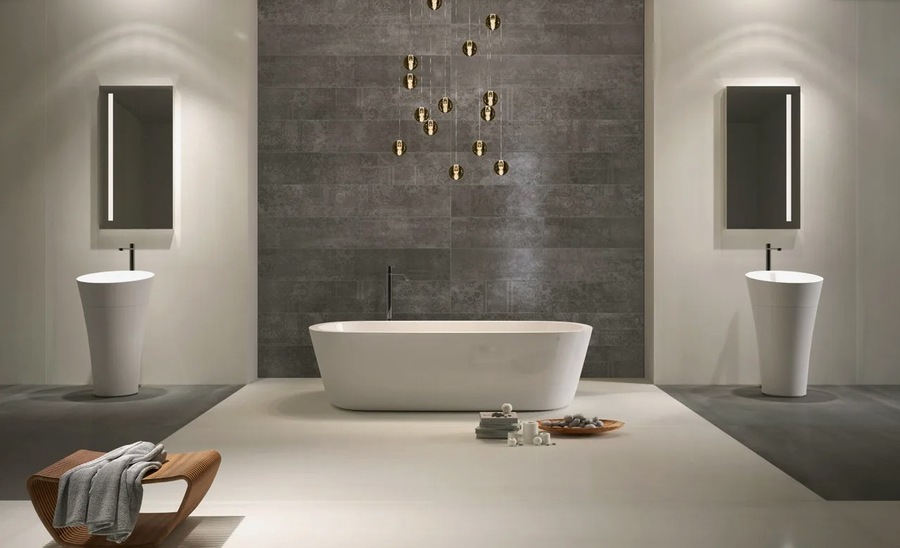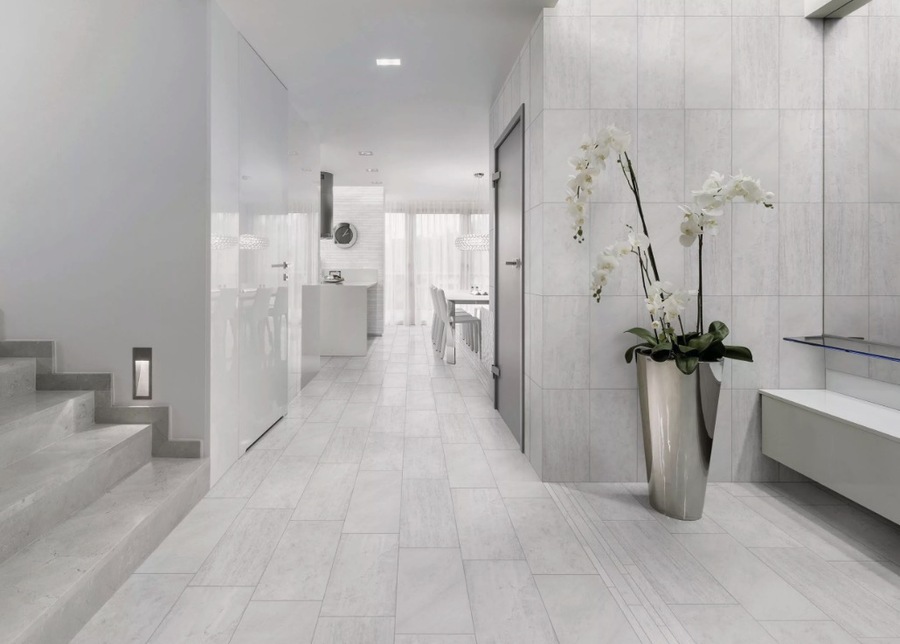Ceramic and porcelain tiles have been essential architecture and design components for thousands of years. Their versatility, durability, and aesthetic appeal have made them popular for various applications, from ancient palaces to modern homes. In this detailed blog, we’ll explore the rich history of ceramic tiles and porcelain tiles, their technological advancements, and how they continue to lead the way in tile innovation.
Content of Page
Historical Background
Ancient Origins
The story of ceramic tiles begins in ancient Mesopotamia around 4000 BCE, where they were used to decorate walls and floors of buildings. These early tiles were primarily functional, protecting against the elements and adding a decorative touch. The Egyptians followed suit, using glazed tiles to adorn their pyramids and temples.
Porcelain tiles originated in ancient China, dating back to the Tang Dynasty (618-907 CE). These tiles were initially used for decorative purposes and prized for their delicate appearance and strength. The Chinese perfected the art of porcelain production, which eventually spread to the Middle East and Europe.
Roman and Islamic Periods
The Romans were instrumental in popularizing ceramic tiles across their empire. They introduced innovations such as mosaic tiles, which created intricate floor patterns in villas and public buildings—the use of tiles spread throughout the Mediterranean and beyond, influencing the design aesthetics of the time.
During the Islamic Golden Age (8th to 14th centuries), ceramic tiles saw significant advancements in design and technique. Islamic artisans developed complex geometric patterns and vibrant glazes, which can still be seen in mosques and palaces across the Middle East and North Africa.
Technological Advancements
Early Innovations
The early production of ceramic tiles involved basic techniques, but significant advancements were made over time. Kiln technology improved, allowing for higher firing temperatures and better-quality tiles. Glazing techniques also evolved, creating more durable and decorative tiles.
19th and 20th Century
The Industrial Revolution marked a turning point in the production of ceramic and porcelain tiles. Mass production became possible with the introduction of hydraulic presses and mechanized kilns. This period also saw glaze and pigment technology advancements, allowing for a wider range of colors and finishes.
Tile sizes and shapes were standardized during this era, making installation more efficient and consistent and the 20th century brought further innovations, including the development of vitrified tiles, which are highly durable and resistant to moisture.
Modern Era
In recent decades, technological advancements have revolutionized the tile industry. Digital printing technology has allowed for intricate and highly customizable designs. High-definition inkjet printing can replicate the appearance of natural materials such as wood and stone, offering more design options to consumers.
Large-format tiles have become popular, providing a seamless look for floors and walls. Advances in tile strength and durability, such as the vitrification process, have made porcelain tiles suitable for high-traffic areas and exterior applications.

Types of Ceramic and Porcelain Tiles
Traditional Ceramic Tiles
Ceramic tiles are made from clay and other natural materials and are shaped and fired at high temperatures. They are available in various sizes, colors, and finishes, making them suitable for multiple applications. Traditional ceramic tiles are often used for walls, floors, and countertops in residential and commercial settings.
Price Range (AED)
- Basic ceramic tiles: AED 20-50 per square meter
- Mid-range ceramic tiles: AED 50-100 per square meter
- High-end ceramic tiles: AED 100-200+ per square meter
Porcelain Tiles
Porcelain tiles are a type of ceramic tile, but they are made from finer, denser clay and fired at higher temperatures. This process makes porcelain tiles more durable, water-resistant, and suitable for indoor and outdoor use. They are often used in high-traffic areas, such as kitchens, bathrooms, and commercial spaces.
Price Range (AED)
- Basic porcelain tiles: AED 30-70 per square meter
- Mid-range porcelain tiles: AED 70-150 per square meter
- High-end porcelain tiles: AED 150-300+ per square meter
Specialized Tiles
The tile industry has developed specialized tiles to meet specific needs. Anti-slip tiles, for example, have textured surfaces to provide better traction in wet areas. Antibacterial tiles are treated with special coatings to inhibit the growth of bacteria, making them ideal for hospitals and kitchens.
Price Range (AED)
- Anti-slip tiles: AED 50-120 per square meter
- Antibacterial tiles: AED 70-200 per square meter
Innovations in Tile Manufacturing
Eco-Friendly Production
Sustainability has become a significant focus in the tile industry. Manufacturers are adopting eco-friendly production processes, such as using recycled materials and reducing energy consumption in kilns. These efforts help minimize the environmental impact of tile production.
Digital Customization
Digital printing technology has transformed the design possibilities for ceramic and porcelain tiles. This technology allows for precise and intricate patterns, including replicating natural materials like marble and wood. Homeowners and designers can now customize tiles to match their specific aesthetic preferences.
Thin Porcelain Tiles
Thin porcelain tiles are a recent innovation that offers several advantages. These tiles are lightweight and easier to install, making them suitable for renovation projects where existing surfaces do not need removal. They also provide a sleek and modern look for walls and floors.
Price Range (AED)
- Thin porcelain tiles: AED 100-250 per square meter
3D and Textured Tiles
Three-dimensional and textured tiles add depth and visual interest to surfaces. These tiles can create unique focal points, such as accent walls or backsplashes. Advances in manufacturing technology have made it possible to produce a wide variety of textures and patterns.
Price Range (AED)
- 3D and textured tiles: AED 120-300 per square meter
Smart Tiles
The integration of smart technology into tiles is an emerging trend. Radiant heating systems, for example, can be embedded in tiles to provide efficient and comfortable heating for floors. Smart tiles with built-in sensors can monitor temperature, humidity, and other environmental factors.
Price Range (AED)
- Radiant heating tiles: AED 200-500+ per square meter (including heating system)

Current Trends and Innovations
Large-Format Tiles
Large-format tiles have gained popularity for their seamless and modern appearance. These tiles can make a space look larger and more cohesive by reducing the number of grout lines. They are commonly used in open-concept living areas, kitchens, and bathrooms.
Price Range (AED)
- Large-format tiles: AED 150-350 per square meter
Eco-Friendly Tiles
The demand for sustainable building materials has led to the development of eco-friendly tiles. These tiles are made from recycled content, such as glass, ceramic, and porcelain waste. Some manufacturers also use renewable energy sources in their production processes.
Price Range (AED)
- Eco-friendly tiles: AED 80-200 per square meter
Digital Printing
High-definition digital printing has expanded the design possibilities for tiles. This technology can replicate the look of natural materials with remarkable accuracy, offering a cost-effective and low-maintenance alternative to traditional materials. Custom designs and personalized patterns are also possible, allowing homeowners to create unique spaces.
Price Range (AED)
- Digitally printed tiles: AED 100-250 per square meter
Thin Porcelain Panels
Thin porcelain panels are a versatile and lightweight option for covering large surfaces. These panels are ideal for renovation projects as they can be installed over existing materials, reducing the need for demolition. They are also suitable for exterior cladding and facades, providing a modern and sleek look.
Price Range (AED)
- Thin porcelain panels: AED 200-400 per square meter
3D and Textured Tiles
Three-dimensional and textured tiles add depth and visual interest to surfaces. These tiles can create unique focal points, such as accent walls or backsplashes. Advances in manufacturing technology have made it possible to produce a wide variety of textures and patterns.
Price Range (AED)
- 3D and textured tiles: AED 120-300 per square meter
Smart Tiles
Integrating smart technology into tiles is an emerging trend. Radiant heating systems, for example, can be embedded in tiles to provide efficient and comfortable heating for floors. Smart tiles with built-in sensors can monitor temperature, humidity, and other environmental factors.
Price Range (AED)
- Radiant heating tiles: AED 200-500+ per square meter (including heating system)
Future of Ceramic and Porcelain Tiles
Potential Technological Advancements
Technological advancements will likely shape the future of ceramic and porcelain tiles. Nanotechnology, for example, could be used to create self-cleaning and self-healing tiles. These tiles would require less maintenance and have a longer lifespan.
Sustainability
Sustainability will continue to be a major focus in the tile industry. Manufacturers are likely to develop more eco-friendly production processes and use renewable materials. Using recycled content in tiles will also become more common, reducing the environmental impact of tile production.
Innovations in Design
The design possibilities for ceramic and porcelain tiles are virtually limitless. As digital printing technology improves, tiles will become even more customizable. Homeowners and designers can create unique patterns and designs that reflect their style.
Applications
Ceramic and porcelain tiles will continue to be used in various residential and commercial applications. Advances in tile strength and durability will make them suitable for even more demanding environments, such as industrial and outdoor settings.
Conclusion
The evolution of ceramic and porcelain tiles is a testament to human ingenuity and creativity. From their ancient origins to the latest technological advancements, these tiles have remained at the forefront of architectural and design innovation. As the industry continues to evolve, ceramic and porcelain tiles will play an increasingly important role in creating beautiful, functional, and sustainable spaces.
RAK Ceramics offers a wide range of high-quality products for those interested in exploring the latest trends and innovations in ceramic and porcelain tiles. Whether you’re looking for traditional ceramic tiles, modern porcelain tiles, or specialized options, RAK Ceramics has something to suit every need and style. Visit RAK Ceramics online or in their Dubai showroom to discover the perfect tiles for your next project.

